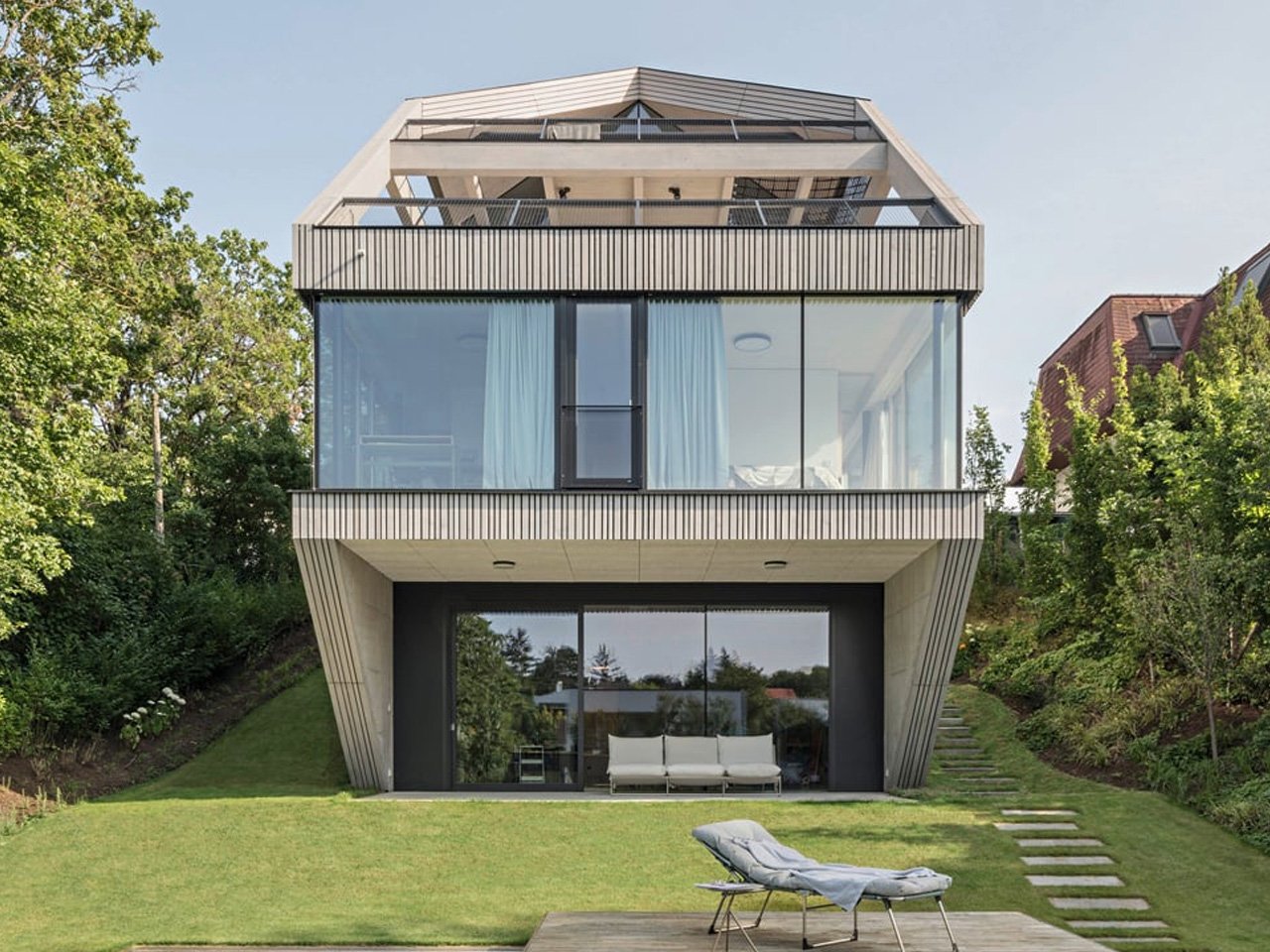A family of four had grown weary of Vienna’s relentless pace. Their solution lay in Perchtoldsdorf’s rolling hills, where Caramel Architekten would craft their 2023 masterpiece. The brief was refreshingly clear: create a home that doubles as an artist’s sanctuary. The sloping site they chose seemed to whisper possibilities, its natural contours practically begging for creative interpretation.
The hillside became the design’s greatest asset. Rather than fight the terrain, the architects embraced its dramatic slope, stacking living spaces like carefully arranged building blocks. The lower level burrows into the earth, housing the artist’s studio and garage in sturdy concrete. This strategic embedding creates a 3-meter-high creative space that opens directly to the garden through generous covered terraces.
Designer: Caramel Architekten
Cross-laminated timber takes over from the concrete foundation, creating the upper floors with warmth and precision. Steel elements peek through where needed, their industrial honesty contrasting beautifully with the untreated wood surfaces. The pre-greyed wooden facade will age gracefully, developing silver patinas that mirror the surrounding landscape. Every material choice reinforces the building’s connection to its natural setting.
The entire roof disappears beneath Sun-Skin photovoltaic panels from Eternit, feeding battery systems that push the house toward complete energy independence. Deep geothermal drilling powers the heat pump, while cellulose-fiber insulation wraps the structure in thermal comfort. The high degree of prefabrication reduced construction waste and site disruption significantly.
The top floor becomes pure indulgence—multimedia rooms and music spaces that spill onto covered terraces facing every direction. Each level serves distinct purposes while maintaining visual connections throughout. The artist’s studio claims the earth-bound lower level, family life unfolds in the middle ground, and recreational spaces crown the composition. Covered outdoor rooms extend the interior experience through changing seasons.
Hertha Hurnaus’s photography captures something special here—architecture that enhances rather than dominates its landscape. The geometric precision never feels cold, and the contemporary elements never seem out of place. This house proves that escaping city life doesn’t mean abandoning sophisticated design. Caramel Architekten created something rarer: a home that nurtures both daily life and creative dreams.
FAQs
1. How does Haus Max incorporate sustainability?
Haus Max is designed to be nearly self-sufficient, thanks to a combination of smart energy solutions and natural materials. The entire roof is covered with Sun-Skin photovoltaic panels that generate electricity, which is stored in on-site batteries. Deep geothermal drilling powers an efficient heat pump for heating and cooling. High-performance cellulose-fiber insulation keeps energy use low, while untreated wood and prefabricated elements minimize the home’s environmental footprint.
2. What makes the design of Haus Max unique?
The design embraces the sloping site rather than fighting against it. Living spaces are stacked vertically, with the artist’s studio and garage tucked into the hillside and main living areas above. Cross-laminated timber and exposed steel create a warm, modern atmosphere, while large covered terraces blur the line between indoors and outdoors. The facade’s untreated, pre-greyed wood will age naturally, helping the house blend into its surroundings over time.
3. What inspired the design approach?
The design was inspired by the family’s desire to leave behind the hectic pace of Vienna and find a peaceful retreat that could also serve as a creative hub. The natural contours of the Perchtoldsdorf site suggested a layered, vertical layout, allowing each level to connect with the landscape in its way. Caramel Architekten focused on creating a home that feels both grounded and open, nurturing daily life and artistic pursuits in equal measure.
The post This Creative Family Retreat In The Austrian Hills Is Rooted In Nature first appeared on Yanko Design.

